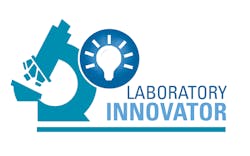Looking back at the history of API, you can also see the transformations that occurred within the laboratory. API is proud to have been the first proficiency testing provider to offer liquid chemistry samples, complete blood count with automated differential, blood cell photographs, and practitioner-performed microscopy. Almost a decade ago, API revolutionized the field by creating a paperless transmission of proficiency test results directly from a laboratory’s information system, and now we offer a one-stop panel of analytic options so that laboratories may monitor their performance. Just this year, API developed one of the world’s first proficiency testing programs for SARS-CoV-2, the virus at the root of the coronavirus pandemic. We innovate by anticipating the needs of our laboratory customers.
In what way (if any) has the emergence of SARS-CoV-2 and COVID-19 dictated changes to your proficiency testing so the clinical industry will be better prepared for the next pandemic? What specific kind of COVID-19-related changes (if any) have taken place as part of future-ready training?
We are engaged in a great war with a novel virus, but as laboratorians, we must always be prepared for the next pathogen. We know test results are the cornerstone of contact tracing activities, community-wide sheltering orders, and how disease transmission is controlled. With SARS-CoV-2, it was essential to act quickly and we did. Our SARS-CoV-2 molecular program, introduced earlier this year, contained samples with the whole genome, providing sequence targets compatible with liquid-based molecular assays. A new program was recently introduced that contains sequence targets compatible with swab-based methods. API also offers a SARS-CoV-2 serology proficiency test, as well as a swab-based program for the detection of SARS-CoV-2 nucleocapsid protein, providing exceptional cross platform commutability. I believe it is important to share aggregate data publicly so that we may all learn more in these circumstances. It’s why we published results from the first round of API proficiency testing in the American Journal of Clinical Pathology.
What do you feel is the greatest challenge of lab proficiency when communicating testing results? What role does proficiency play in today’s clinical lab in terms of lab personnel performance and the accuracy of test results?
Laboratories should not have a challenge when communicating their proficiency testing results. It’s why we created API DataDirect so that the transmission is seamless and paperless. Proficiency testing is an external, objective measure that assesses the accuracy of clinical laboratory testing. It allows clinical laboratories to review, compare and assess their operation, including staff competencies, equipment and material utility, and specimen handling. It’s a vital component of the laboratory’s quality assurance.
For lab directors who have limited time and budgets to train new lab hires, what would you recommend as the most important areas to focus on for proficiency testing and certification?
The best advice is to follow the data for your laboratory. Proficiency test results can assist a laboratory director in knowing where and how to make improvements, if warranted.
Looking to the future of the current COVID-19 pandemic, what role can test proficiency play in any future pandemics?
SARS-CoV-2 is a novel coronavirus, meaning it was new and unproven. We are now several months into the COVID-19 pandemic and there is still much we do not know about it. Proficiency testing provides the confidence laboratories crave in these critical times. In the first round of our proficiency testing program for SARS-CoV-2 RNA, the results were rather remarkable. The overall performance, across testing platforms, in the detection challenge was excellent with 97.4 percent correctly detecting the presence of the virus, and 98.3 percent correctly indicating when the virus was not present. This provides needed assurance that laboratories are testing accurately for this novel coronavirus.


